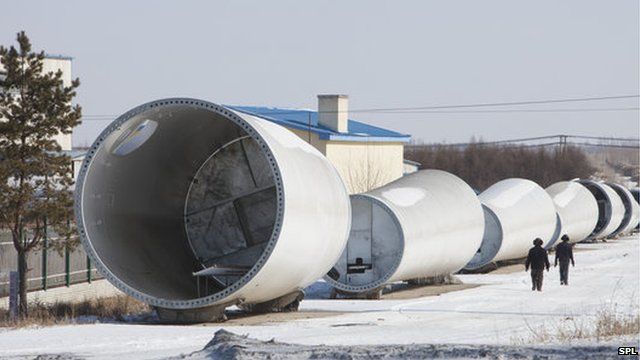China's carbon crunch
- Published

There are growing expectations that China will soon give details of its pledge to cut carbon emissions ahead of key UN climate talks at the end of the year in Paris.
As the world's biggest emitter of greenhouse gases, China's contribution is of global significance.
China announced last November, in a joint declaration with the US, that it would peak its carbon emissions by 2030. This target forms the blueprint for China's offer.
Although the core commitments are not likely to change, more details of China's climate action plan will become clear when it publishes its INDC, expected before the end of June. Beijing has already set a goal of getting 15% of its energy from clean sources by 2020.
What are INDCs?
There are many acronyms around climate change and INDC (intended nationally determined contributions) is one that you will be hearing a lot about in the coming months. INDCs are the climate action plans pledged by countries taking part in the UN talks in December.
They outline the actions each country intends to take after 2020 on climate change, and will form part of any new global agreement on curbing climate change.
A number of countries have already submitted their INDCs, including the EU, US, Russia and Mexico. There is speculation that China may publish its INDC at a summit with the EU this week.
Why is China so crucial to success in Paris?
China is the world's biggest emitter of greenhouse gases (by volume), accounting for more than a quarter of global emissions.
The country has relied heavily on coal in its development, and overtook the US as the world's biggest producer of carbon dioxide several years ago.
Many of China's cities are heavily polluted, and China has declared "war on pollution".
Like all countries, China's INDC will reflect its ambition for curbing climate change and how it intends to reduce carbon emissions, taking into account domestic circumstances.
If China is ambitious, this may encourage other countries to step up their plans.
China is moving faster in reducing its carbon intensity - the carbon dioxide emitted per unit of energy produced - than most other countries.
It is also the world's biggest investor in green energy, spending more than $90bn in 2014 alone.
There are reports that China could further strengthen its plans for cutting carbon intensity.
What happens next?
A strong signal from China on tackling climate change will add momentum in the run-up to Paris.
The goal of world leaders is to limit global temperature rises to no more than two degrees on pre-industrial times.
Once China has set out its stall on carbon emissions, it will be possible to analyse how the countries emitting about half of all of the world's greenhouse gases intend to act.
Scrutiny of INDCs by think-tanks, campaigners and governments suggests there will be a big gap between what has been promised and what is needed to meet the two degrees target.
Negotiators are stressing the need for a deal where pledges can be ramped up in the future without needing to change the agreement itself.
One of the few certainties about Paris is that it will be the beginning not the end of the story.